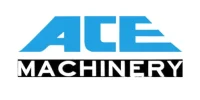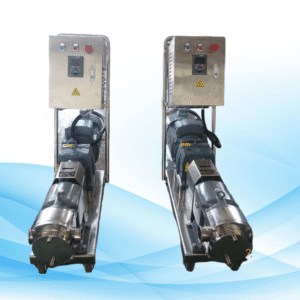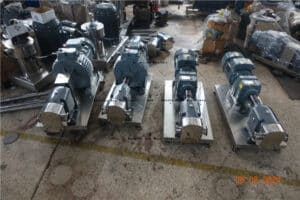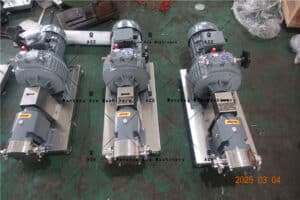Understanding Sump Pumps: The Dos and Don’ts Analyzed
Almost all homes nowadays have a sump pump because such devices are useful in avoidance of issues such as water-damaging effects within the home. This device also helps to evacuate water out of the house to avoid cases of flooding in the basement and crawl spaces. Over time, moisture in building elements will lead to a weakening of the structure and leakage of oxygen, which supports ‘life’to the building center. A sump pump assists in stopping this from happening, as the living space will always be dry by storing away all the dirty after water plays. Another thing, too, is to ensure that the device remains in place to maintain protection of the house from damages.
What is a Sump Pump?
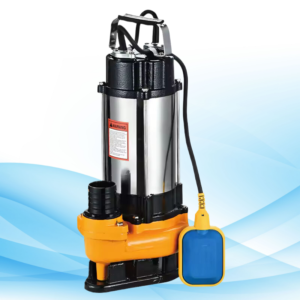
Concept of Sump Pump – Definition, Objectives
Basic definition of a sump pump
As its name suggests, it’s a device – or indeed a mount device destined to come out of residency cum basement or others structure. The pump is located in a confined underwater mass and removes water in the basin – commonly referred to as the sump, while this water reaches a certain high level.
Primary purpose and function
The main reason for the use of sump pumps is to assist in removing the water in specific areas of the home which are susceptible to flooding, especially the lower levels of the house. Because of the high amounts of rainfall or the high rise of groundwater, there is accumulation of water in the sump basin. The sump pump also pumps out the remaining water from that area, and it is now dry and favorable for the health of humans.
How Sump Pumps work
Components of a sump pump system
Certain features are found in the sump pump system. The sump basin retains the water until the pump is activated. A float switch is a simple device that automatically turns the pump on when the water level rises. The electrical energy supplied to the electrical socket makes the pump rotate as it pumps liquid through discharge pipes. Non-return valves or check valves which prevent the water in the pipelines running back to the basin are placed.
Operational process
The operation of a sump pump begins with the collection of water in the sump basin. A float level switch gets submerged in water when the water level rises, and activates the pump. Fuel or electrical power drives the motor that expels water through drainage discharge pipes. Sump pump discharge pipes are discharges terminated at a location that is some distance from the building, to prevent flooding; water-related risks. This operation serves to protect the house against the risks of water damage.
Dewatering Sump Pumps
Submersible Sump Pumps

Features and benefits
These are generally made such that they are to be fixed at a water level within the sump and or beneath the sump basin. Traumatic sounds are minimized. Thermal energy of the motor is contained within water. Submersible sump pumps are very high in performance with very good recorded records. Whenever excess water is experienced, there is swift evacuation of water from the water chamber. Because part of the pump is carefully confined, exposure to the atmosphere, thus wear and tear, is limited.
Optimal usage situations
Submersible sump pumps are ideal in the best conditions in areas like basements that are at risk of flooding. These pumps are a must for homes comprising finished basements. These are installed for such purposes as limited occupancy spaces, helping to reduce messiness and clutter, hence appropriate for living places.
Pedestal Sump Pumps

Features and benefits
Pedestal sump pumps employ motors that are installed over the water level in the sump basin. These pumps are generally cheaper. The elevated placement makes sure that the motor stays dry and increases the lifetime of the appliance.
Ideal utilization
Pedestal sump pumps are mainly meant for households with shallow or thin sump basins that are common in unfinished basements. A large percentage of cost conscious customers tend to prefer the pedestal pumps due to their cheaper price and low maintenance.
Emergency Standby Sump Pumps
Significance of backup power
Electric battery pumps provide flood protection in case of a power loss. The backup comes into effect when the primary pump is inoperative and then prevents the possibility of flooding into the houses.
Operation of systems
The battery backup sump pump acts as an accessory to the main pumping system. In the event power fails to the primary pump, the secondary backup pump engages. They play a critical role in the defense against flooding of houses when the power supply is interrupted.
Costs and Installation
Cost Breakdown
The cost of sump pumps averages between one hundred to three hundred dollars for a standard unit, while high-end ones can go above five hundred dollars. Battery backup systems usually run to 200 to 600 dollars, while overall installation costs come between 500 and 1500 dollars.
Cost Drivers
Over and above the standard features, pumps can also have more added; for example, alarm systems, and Wi-Fi capabilities, and so on. Customization of the structure and cost for labor in the area also contribute to determining the total amount.
Installation Options
Installing by the Owner and Professional
One option available to homeowners is opting for self installation, which means some savings, because some skill is needed. Equipment installation is done properly when done by a professional, and this type of installation is useful as it comes along with installation guarantees
Key installation steps
Speaking of the installation, certain important stages can be distinguished; these are choosing the appropriate site for the system, excavating the sump pit and dispersing the pump, and installing the discharge pipes and discharging the pump. It is also necessary that the system be checked for its operability after installation.
Maintenance and Troubleshooting
General Maintenance Measures
Scheduled checks and cleaning
Operating this appliance under the conditions of normal use and within the patterns required will extend its life. Basement sump cleaning, visual assessment of the sump pump, and pump inlet strainer cleaning should all be done periodically. One way of testing is to pour some water into the basin and see if the pump comes on.
Signs of problems
Poor equipment such as pumps tend to emit some noise; sometimes there may be very little water discharge or water may streak very low through the inlet; many such circumstances are warning of a problem. It is advisable to replace pumps that are aged more than ten years.
Routine Problems and Their Solutions
Problems that are common
Common issues experienced with a sump pump include power supply interruptions, obstruction of discharge piping, inoperable float switches, and breakdowns of equipment. There are cases when the pump is allowed to operate for long periods continuously, and this may result in unnecessary heating.
Solutions
Basic solutions to this problem include checking whether there is sufficient power, unclogging the discharge pipe, or replacing a broken motor turning on float switch. Sources of backup power are very important to give cover in the event of power failures.
Other Options for Sump Pumps
French Drains
Description
A French drain can be installed in place of a sump pump, this comprises a trench that is filled with gravel or other aggregates and a pipe within it that drains the water to a safe distance from the building.
Pros and cons
French drains don’t need any electricity as they are passive systems, but the effectiveness of the systems may decrease during the rainy periods and the installation costs are higher than those of the other systems.
Water-Powered Backup Pumps
How they work
Water powered backup sump pumps use the house water pressure to force water out of the sump, and hence are used instead of backup batteries to power a sump pump when the power is out.
Pros and cons
People who don’t get water-powered backup pumps are mostly those who have plentiful electric supply already. This is due to the fact that these pumps will always add to the water bills and would be useless if the city water supply does not work.
Conclusion
While basements serve their purpose, sump pumps offer a level of protection from water damage that makes houses whole. It is worth noting, that there are three classifications of sump pumps, namely submersible, pedestal, and battery backup, all of which have their advantages. There is good ventilation to prevent moisture buildup in structures and regular service is provided. More aggressive measures such as inverted drains or standalone water driven pumps are also available. There are many such sumps in the market, each with unique abilities, which makes it hard to select the best one for your household. For added security from flood damages, it is best to have a qualified person carry out the installation.
